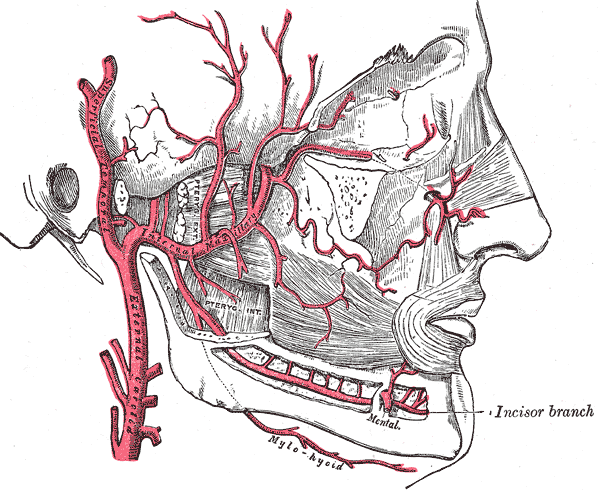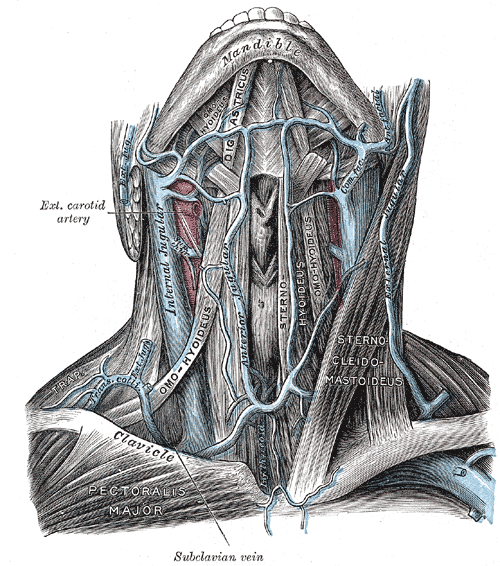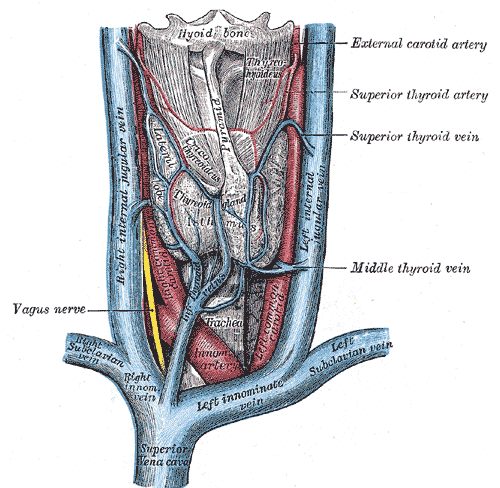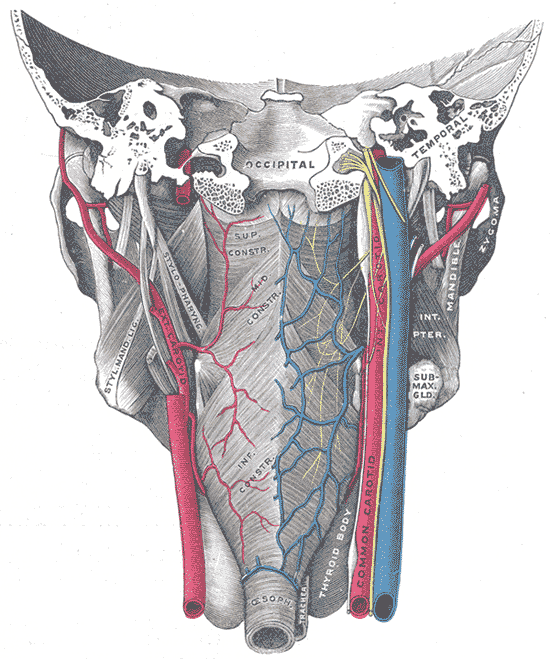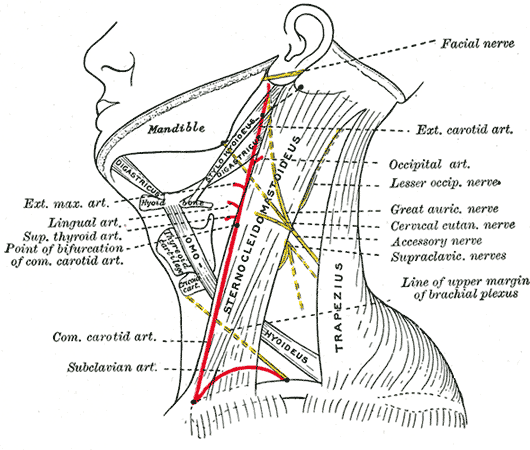External carotid artery
Template:WikiDoc Cardiology News Editor-In-Chief: C. Michael Gibson, M.S., M.D. [1]
In human anatomy, the external carotid artery is a major artery of the head and neck. It arises from the common carotid artery when it bifurcates into an internal and external branch.
Course
The external carotid artery begins at the level of the upper border of thyroid cartilage, and, taking a slightly curved course, passes upward and forward, and then inclines backward to the space behind the neck of the mandible, where it divides into the superficial temporal and maxillary arteries after passing through the parotid gland.
It rapidly diminishes in size in its course up the neck, owing to the number and large size of the branches given off from it.
In the child, it is somewhat smaller than the internal carotid; but in the adult, the two vessels are of nearly equal size. At its origin, this artery is more superficial, and placed nearer the middle line than the internal carotid, and is contained within the carotid triangle.
Relations
The external carotid artery is covered by the skin, superficial fascia, Platysma, deep fascia, and anterior margin of the Sternocleidomastoideus; it is crossed by the hypoglossal nerve, by the lingual, ranine, common facial, and superior thyroid veins; and by the Digastricus and Stylohyoideus; higher up it passes deeply into the substance of the parotid gland, where it lies deep to the facial nerve and the junction of the temporal and internal maxillary veins.
Medial to it are the hyoid bone, the wall of the pharynx, the superior laryngeal nerve, and a portion of the parotid gland.
Lateral to it, in the lower part of its course, is the internal carotid artery.
Posterior to it, near its origin, is the superior laryngeal nerve; and higher up, it is separated from the internal carotid by the Styloglossus and Stylopharyngeus, the glossopharyngeal nerve, the pharyngeal branch of the vagus, and part of the parotid gland.
Branches
- Arising in carotid triangle[1]
- Terminal branches
Mnemonics
Mnemonics are traditionally used to commit these branches to memory.[2] A memorable mnemonic appears in Samuel Shem’s classic novel The House of God (1978):
- Running through my mind, over and over like Muzak, was a mnemonic for the branches of the external carotid artery: As She Lay Extended Olaf’s Potato Slipped In. And even there, the only one I could remember was Olaf’s, which stood for Occipital. And what the hell use was that?
Here Shem uses the older terms External maxillary artery for Facial artery and Internal maxillary artery for Maxillary artery. The Ascending pharyngeal and Superior thyroid appear in their correct sequence, while the names of the two terminal branches are reversed.
Mnemonics using modern terminology include "Some Anatomists Like Freaking Out Poor Medical Students," "Some Angry Lady Figured Out PMS", "Several Angry Ladies Fighting Over PMS" and "Snoopy And Linus Fornicated On Papa’s Music Stand."
Additional images
-
Plan of branches of internal maxillary artery.
-
The internal carotid and vertebral arteries. Right side.
-
The veins of the neck, viewed from in front.
-
The veins of the thyroid gland.
-
Muscles of the pharynx, viewed from behind, together with the associated vessels and nerves.
-
Side of neck, showing chief surface markings.
